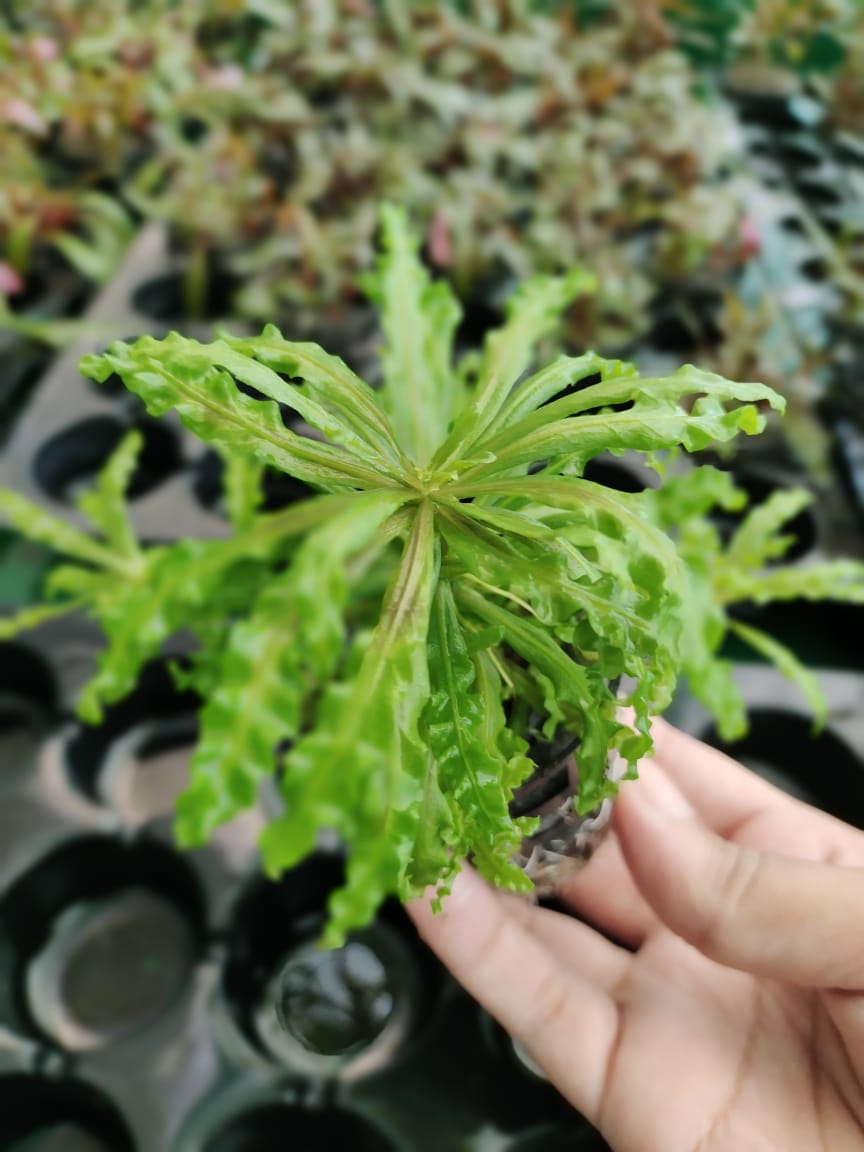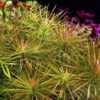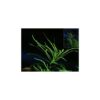Pogostemon helferi was discovered by aquarists in Thailand near the border with Burma. In Thailand, it is known as ‘Downoi’ (little star), and it is easy to see why (5-10 cm tall and wide). Pogostemon helferi is a unique and distinctive aquatic plant with a compact habit, curly leaves, and a stunning green colour. Pogostemon helferi forms many side shoots that develop small roots in the presence of good light and a nutrient-rich substrate, and the plant quickly forms an impressive carpet of foreground vegetation.
Pogostemon Helferi requires constant fertilisation, especially when there aren’t many fish in the tank to contribute. When the leaves do not get enough iron, they turn yellowish, but they can recover quickly if you notice it early and add nutrients in the recommended doses. Pogostemon Helferi is a unique but lovely foreground plant for aquariums. The curled appearance and dark green colour of its leaves give it a distinct appearance. Locals in Thailand called this plant “dao noi,” which means “little star.” It lives in riverbeds from Thailand’s border with Burma, and can be found both submerged and partially immersed.
Pogostemon Helferi is a striking plant distinguished by its green curly leaves spiralling up the shoot. It is not only beautiful, but it is also one of the smallest freshwater plants in your tank. That means a Pogostemon Helferi can live in a smaller tank. In appearance, these plants are similar to Dwarf Baby Tears. The plant’s leaf shape is wavy, and it has a rosette-shaped design. Helferi leaves grow outwards from the stem, forming a star-shaped pattern with their wavy leaves. They look stunning with Dwarf Baby tears. These leaves have a wax coating that makes them appear thicker and more luscious in the light.
Size: A typical Pogostemon Helferi can grow up to 2 inches in the lower end and 6 inches in the upper end. They make an excellent foreground plant and will give the appearance of a densely planted tank.
Tank Dimensions and Specifications for Pogostemon Helferi: Setting up a tank that mimics a plant’s natural environment is the best way to make it feel at home and grow to its full potential. Follow these guidelines to ensure the success of your Helferi.
Pogostemon Helferi Water Parameters:
Water Temperature: Pogostemon Helferi prefers water temperatures ranging from 73.4 to 86 degrees Fahrenheit. Because the Pogostemon Helferi thrives in a wide range of water temperatures, it is suitable for a wide variety of tanks. To keep the temperature stable, you can use external devices such as a heater and a thermometer.
The ideal water’s pH level Pogostemon Helferi has a pH range of 5.5 to 7. This plant prefers slightly acidic water. To ensure that your pH level is correct, use a testing kit to measure it on a regular basis.
Water Hardness: Because its natural habitat in Thailand is constantly changing, this plant is fairly tolerant of changes in water chemistry; this makes it even easier to keep, as water parameters can vary.
Remember to change your water on a regular basis to keep your plants and fish healthy. Never change the entire amount of water, as this will kill all of the good bacteria in the tank. You can change 10% of the water once a week or 30% every two weeks.
Before adding any new water to the tank, check the parameters of the water and then add it to ensure that there is no drastic change.
Planting your Pogostemon Helferi: Leave the bundle in the pot alone and plant it about 1.8 inches deep in the substrate to acclimate to your water conditions. After that, divide it into 4-5 smaller stems and replant them in the substrate about 1-2 inches apart.
The new plants will quickly form a dense carpet. In the tank foreground, the Pogostemon Helferi will look good in smaller and larger packs.
Is CO2 required for Pogostemon Helferi?
CO2 enrichment always stimulates growth, but it is not required to successfully grow Pogostemon helferi; the plant simply grows a little slower.
How should a pogostemon Helferi be cared for?
It requires constant fertilising, especially when there aren’t many fish in the tank to contribute. When the leaves do not get enough iron, they turn yellow, but they can recover quickly if you notice it early and add nutrients in the recommended doses.









Reviews
There are no reviews yet.